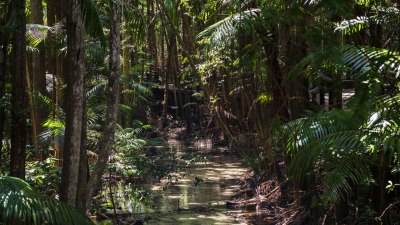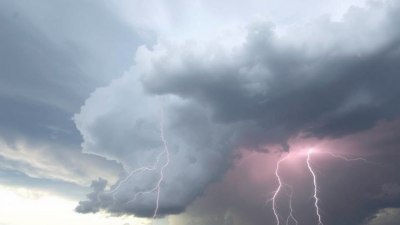Why Rainforests Create Rain and Not Just Trees
Explore how rainforests generate rain and their crucial role in Earth's climate system.

Rainforests, often referred to as the lungs of our planet, are more than just a collection of trees. They play a critical role in the Earth’s hydrological cycle, producing rain in significant quantities. The intricate interplay between plant life and atmospheric processes is a fascinating topic.
To understand why and how rainforests create rain, it is essential to delve into the science of evapotranspiration—a process where water evaporates from the soil and transpires from plants. This is a vital component of the water cycle, and rainforests, with their dense vegetation, are highly effective at this process. Each tree and plant contributes to a significant amount of moisture being released into the atmosphere.
Evapotranspiration Explained
Evapotranspiration occurs when water is absorbed by the roots of plants and then released as vapor through tiny pores known as stomata on leaves. In a rainforest, with its dense canopy, the amount of transpired water can be enormous. This moisture is then released into the atmosphere, cooling the surrounding air and contributing to cloud formation.
Interestingly, moisture released from rainforest plants can travel long distances, as the heat generated by the sun causes the air to rise. This rising air cools as it ascends, leading to condensation and cloud formation, ultimately resulting in rainfall. Therefore, the moisture cycling process is essential for the climate not just of the rainforest itself, but also for surrounding regions.
Role of the Rainforest Canopy
The canopy of a rainforest plays a critical role in rain generation. It serves as a biological water tower, where many species of plants grow high above the ground while intermingling and creating a diverse environment that captures and utilizes sunlight efficiently. The leaves of canopy trees have a large surface area, which maximizes their capacity to absorb moisture from rainfall and release it back into the atmosphere. This process is amplified by the fact that temperatures are generally higher near the canopy due to sunlight exposure, promoting evaporation.
When rain does fall, a portion is intercepted by the leaves, branches, and trunks of trees, thus reducing water that directly hits the soil. This promotes a unique water retention system that both supports the trees and contributes to the moisture within the ecosystem. Eventually, the water that is not retained is pushed down to the forest floor, fostering a vibrant and diverse understory of plants.
The Interaction with Weather Patterns
Rainforests influence local and global weather patterns significantly. As they release water vapor, they boost humidity levels in the atmosphere, promoting precipitation. This effect can create feedback loops, whereby increased rainfall further nurtures the forest and perpetuates its uplifting role in weather systems.
Furthermore, rainforests are interconnected with broader weather phenomena such as El Niño and La Niña. These climate patterns can alter ocean temperatures and currents, which in turn impacts rainfall patterns worldwide. Rainforests, in their capacity to generate rain, interact with these global systems, highlighting their importance for maintaining ecological balance.
Climate Regulation and Biodiversity
As rainforests generate rain, they also play a crucial role in regulating climate. They absorb significant amounts of carbon dioxide, one of the primary greenhouse gases contributing to climate change. By controlling carbon levels and increasing humidity, rainforests help stabilize local climates, extending their influence beyond their immediate vicinity. This also helps protect biodiversity, as many animal and plant species depend on stable climates for survival.
The rich biodiversity in rainforests contributes to their capacity to produce rain. Different species of plants release varying amounts of water, thus supporting diverse moisture exchange. The interconnectedness of this flora and the fauna that relies on it creates a complex ecosystem that is more resilient to changes, such as deforestation or climate shifts.
Human Impact on Rainforests
Human activities, particularly deforestation and agriculture, pose significant threats to rainforests and their ability to generate rain. Logging, land conversion, and urban development reduce the number of trees available to contribute to evapotranspiration. This reduction can lead to altered weather patterns, increased temperatures, and, ultimately, less rainfall—a phenomenon observed in many regions where rainforest destruction occurs.
Moreover, after trees are removed, the soil can become compacted, reducing its ability to retain water, further frustrating the natural cycle of moisture generation. This reinforces the cycle of decreasing rainfall, emphasizing the necessity for sustainable management and conservation efforts to protect these ecosystems.
Conservation Efforts
Given the vital role rainforests play in our climate and weather systems, conservation efforts are paramount. Protecting, restoring, and sustainably managing these ecosystems can help combat climate change while ensuring that they continue to fulfill their essential roles. Organizations worldwide advocate for policies aimed at reducing deforestation, promoting reforestation, and protecting indigenous land rights, all pivotal to maintaining the world’s biodiversity.
Additionally, promoting awareness and education about the role of rainforests can inspire collective action to protect these crucial ecosystems. The global community must recognize the complex interdependencies between the rainforest, climate regulation, and rain generation to foster strategies that ensure the resilience of these vital natural resources.
The Future of Rainforests and Rain Generation
In conclusion, rainforests generate rain not merely through their vast canopies but through the complex interactions of biological, atmospheric, and climatic processes. They are crucial providers of water to both local and global environments, sustaining diverse life forms. However, human activities threaten their very existence and the ecological balance they create. Understanding this dynamic relationship will be essential for fostering policies aimed at protecting these ecosystems in the future.
Continued research into evapotranspiration and climate interactions will provide deeper insights into these processes, potentially leading to innovative solutions for conservation and climate resilience. Rainforests are more than just trees; they are intricate ecosystems integral to the welfare of our planet.











